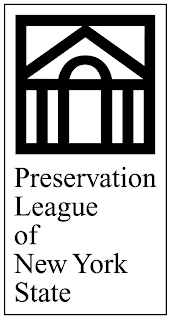For the first time in nearly 80 years, legendary early twentieth century photographer Alfred Stieglitz’s iconic New York City photographs will be displayed together as part of the groundbreaking, new exhibition “Alfred Stieglitz New York,” at Seaport Museum New York in Manhattan. The exhibition opened September 15th and runs through January 10, 2011.
Stieglitz – a central figure in the history of photography and modern art and husband of artist Georgia O’Keefe – lived in New York City for most of his life and chronicled its dramatic transformation into the archetypal metropolis of soaring skyscrapers, subways and electric lights. These works have not been displayed together since 1932, when Stieglitz featured them at his own gallery, An American Place.
“Alfred Stieglitz New York,” featuring 39 vintage Stieglitz photographs, is organized into three galleries. The first evokes the spirit of 291, Stieglitz’s pioneering gallery, which cemented his reputation as an impresario of European modern art. It will include a facsimile of a lantern slide show, the first time Stieglitz’s lantern slides have ever been exhibited – and prints from 1893 to 1916. The second gallery presents portraits taken from the windows of his midtown Manhattan apartment and gallery in the 1930s, when Stieglitz re-engaged New York as a subject for his photography. The third and final gallery examines the explosion of imagery of New York in popular culture and fine arts, including works by renowned photographers Paul Strand, Lewis Hine and Berenice Abbott.
“Stieglitz is one of the most distinguished American photographers, and Seaport Museum New York is thrilled to be the first cultural institution to bring these beautiful and important images together under one roof,” said Mary Ellen Pelzer, president and CEO of Seaport Museum New York. “This exhibition will give everyone, from lifelong New Yorkers to visitors, a unique look at the emergence of the modern city through the eyes of a masterful observer. It exemplifies our commitment to telling the ongoing story of New York in bold and unexpected ways.”
“Alfred Stieglitz New York” is curated by Dr. Bonnie Yochelson, former curator of prints and photographs at the Museum of the City of New York, who also authored the exhibition’s catalogue. The photographs were brought together from several leading national art institutions, including the Metropolitan Museum of Art, the Museum of Modern Art, the Art Institute of Chicago and the Philadelphia Museum of Art as well as from private collectors.
“Georgia O’Keefe famously remarked, ‘Stieglitz was always photographing himself.’ Indeed, he never went far from his home or place of work to photograph,” stated Yochelson. “During Stieglitz’s lifetime, New York became a symbol of the modern city, and this show provides the rare opportunity not only to better understand how Stieglitz saw New York, but to compare his personal vision with the idea of New York in popular culture and among other photographers with different points of view.”
Photo: The Terminal, Alfred Stieglitz Collection, Courtesy of the Board of Trustees, National Gallery of Art, Washington.








